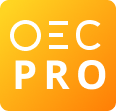Overview In 2022 Montenegro was the number 154 economy in the world in terms of total exports and the number 145 in total imports.
Exports The top exports of Montenegro are Copper Ore ($335M), Electricity ($262M), Raw Aluminium ($237M), Aluminium Ore ($47.2M), and Packaged Medicaments ($43.9M), exporting mostly to South Korea ($321M), Serbia ($159M), Italy ($125M), Switzerland ($116M), and Bosnia and Herzegovina ($95.5M).
Imports The top imports of Montenegro are Electricity ($592M), Refined Petroleum ($419M), Raw Aluminium ($188M), Cars ($148M), and Packaged Medicaments ($110M), importing mostly from Serbia ($1.15B), China ($387M), Italy ($378M), Croatia ($330M), and Greece ($317M).
Location Montenegro borders Albania, Bosnia and Herzegovina, Croatia, and Serbia by land and Italy by sea.

